Recent Fire Damage Posts
How Renter's Insurance Can Help Protect From Fire Damage
1/26/2022 (Permalink)
You most likely know someone who has been through a home fire. They are eager to share lessons learned the hard way. One of those lessons is that insurance can help protect your family financially if a fire should affect your home.
Here are a few ways renter’s insurance can help protect you from fire damage:
- Protect personal property. Your landlord’s insurance will cover the building and items that belong to the property owner, but your items are not included in that coverage. As a renter, you need a policy to provide replacement value of personal property lost from fire damage.
- Prevent financial destruction from liability. Most renter’s insurance policies include protection in case you accidentally start a fire. Of course, this does not cover intentional or criminal conduct.
- Provide money for accommodation. Make sure your policy includes this coverage, which provides for hotel fees or the expense of relocation. A loss of use can help pay for you to live somewhere else if your current space becomes uninhabitable from a disaster, like fire.
Be sure to remember that flood damage still requires separate coverage, but fire and other disasters, such as wind, lightning, theft, and vandalism, are usually covered. Coverage may have some limits, so consider getting a rider for special items that may be valuable. It is up to the property owner to have adequate coverage for the building and any furnishings that are included. Fire restoration can encompass many different types of damage including water, smoke, and soot. A good restoration company will be able to handle all types of damage, working with you to minimize loss and clean your belongings when it is possible to do so.
Time to Take the Tree Down!
1/12/2022 (Permalink)
We get it, you like Christmas. In fact, you like it so much that you still have your Christmas tree up! If this is you, we recommend taking your tree down ASAP (if you have a real tree). Dried out Christmas trees are a major fire hazard we see constantly.
According to the National Fire Protection Association, an average of 160 homes fires are started by Christmas trees, resulting in up to $10 million in property damage annually. The primary causes of such fires are lighting or electrical equipment. Nearly one in five Christmas tree fires were started by decorative lighting.
Dried out or dead trees increase the chances of fire occurring. A dried-out Christmas tree typically takes less than a minute to burn whereas a well-watered tree can take several minutes to fully burn. Within 70 seconds, an entire room can become engulfed in flames by a flashover. A flashover is a near-simultaneous ignition of most of the directly exposed combustible material in an enclosed area.
Real Christmas trees are three times more likely to cause a fire than fake trees. If you have a real tree and it is dried out, time to take it out. If you experience fire damage this winter or any disaster in your home or business, call SERVPRO of Glen Burnie at 410-766-1110!
The Right Fire Extinguisher for You
12/23/2021 (Permalink)
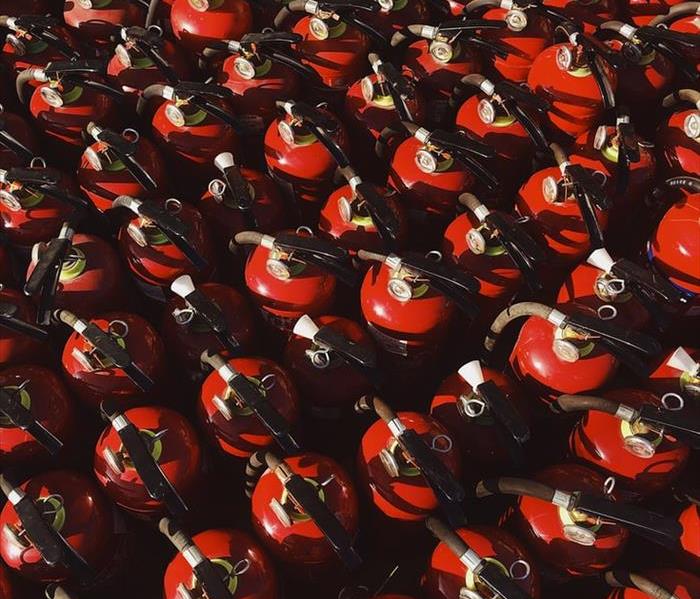 Stay safe from cooking fires this holiday season!
Stay safe from cooking fires this holiday season!
SERVPRO of Glen Burnie sees a lot of fires. Many fires start in the kitchen and might be easily extinguished if the property owner had a fire extinguisher. We obtained the following list so you can select the best fire extinguisher for your property:
Class A: This is the most common extinguisher and can be used to put out fires in ordinary combustibles such as cloth, wood, rubber, paper, and many plastics.
Class B: Used on fires involving flammable liquids, such as grease, gasoline, and oil.
Class C: Designed for fires involving appliances, tools, or other equipment electronically energized or plugged in.
Class D: For use on flammable metals; often specific for the type of metal in question. These are typically found in factories.
Class K: Intended for use on fires that involve vegetable oils, animal oils, or fats in cooking appliances. Generally found in commercial kitchens.
Did you know cooking equipment is the leading cause of residential fires? As the holiday season begins and you find yourself in the kitchen more often while hosting friends and family, fire precautions should be top of mind. Plan this season to help ensure it is safe and fire-free.
Freeze Winter Fires
12/23/2021 (Permalink)
Heating units, holiday decorations, winter storms, burning candles. Do you know what all these things have in common? They increase the risk of house fires during the winter months. Luckily for Anne Arundel County residents, SERPVRO of Glen Burnie has some tips on each of these factors that may help reduce the risk of fires in your homes.
Carbon monoxide
In the home, heating and cooking equipment that burn fuel are potential sources of carbon monoxide. These carbon monoxide incidents are more common in the winter months due to the increased usage of heating and cooking equipment in the during the holidays.
Winter Storms
Most of the United States is at risk for winter storms, which can often bring dangerous, life-threatening conditions. Wind blowing snow, extreme temperatures, icy road conditions, down trees and power lines can all cause major disruptions to our daily schedules. Stay alert with changing weather conditions and only drive in wintry conditions if necessary.
Generators
Portable generators can be useful when a power outage occurs, but many homeowners are unaware that the improper use of these generators is risky. Again, carbon monoxide poisoning is one of the most common dangerous associated with portable generators. Electrical shock and fire hazards also pose a threat when using these generators.
Candles
Candle fires peak in the months of December and January by 11 in each of these months. Christmas is the peak day of the year for candle fires. If you have company at your house this year, don’t forget about your candles
Electrical
Electrical home fires are a leading cause of home fires in the United States. Half of all fires, according to the NFPA involved electrical distribution or lighting equipment, while the other half involved other types of electrical equipment or appliances.
We hope these tips help you stay safe during the winter this year. If disaster strikes, call SERVPRO of Glen Burnie at 410-766-1110 and we can make any size disaster “Like it never even happened.”
What to do and NOT to do after a fire in your home!
12/2/2021 (Permalink)
A backdraft of emotions often sweeps over homeowners after a fire ravages their home. Fear, uncertainty, stress and doubt about the future of the property can be overwhelming well after the flames have been extinguished. After the first wave of heroes have rescued the property, call SERVPRO of Glen Burnie to help you restore it. With the industry-approved, cutting-edge technology and open communication, we strive to not only restore your home, but your peace of mind as well. While you wait for our SERVPRO professionals to arrive, there are a few things you can do until help arrives:
- Limit movement in the house to prevent soot particles from spreading
- Place clean towels or old linens on rugs and high traffic areas and upholstery to help preserve it
- Coat chrome faucets, trim and appliances in petroleum jelly or oil
- Place aluminum foil or wood blocks between furniture legs and wet carpet
- Do not wash any walls or painted surfaces
- Do not clean any electrical equipment
- Do not send clothing to a dry cleaner
The first 48 hours after a fire damage can make a massive difference between restoring versus replacing your belongings. Luckily for you, SERVPRO of Glen Burnie offers a variety of services to help ensure your property, belongings, and memories are restored to their preloss condition.
Fire Safety for the Holidays!
11/4/2021 (Permalink)
House fires are more common in the winter than any other season. The reasons for this are because of the use of more candles, excessive cooking, Christmas trees, holiday decorations and heaters. Modern homes also have more synthetic materials that are likely to burn quicker, making fires even more dangerous. That is why it is important for you and your family to know how to take precautionary measures to avoid this disaster.
SERVPRO of Glen Burnie recognizes the threats to your home and wants to keep you safe during the holidays. Here are a few fire safety tips for the coming months:
- Make sure you have working smoke detectors. Check and test your smoke detectors once a month to ensure they are working properly.
- Never keep anything within three feet of your space heater and turn it off before you go to bed to avoid overheating.
- Do NOT leave any cooking food unattended. It is easy to get distracted during the holiday season with friends and family but always remember your food comes first!
- Do NOT leave candles unattended or within a foot of anything flammable. Do not forget about your candles and remember to put them out if you leave the room or go to bed.
Stay safe from fires during the holiday season and contact SERVPRO of Glen Burnie if your home happens to be affected by a fire. Our trained professionals can make any size disaster “Like it never even happened.”
Why are Space Heaters so Dangerous?
1/26/2021 (Permalink)
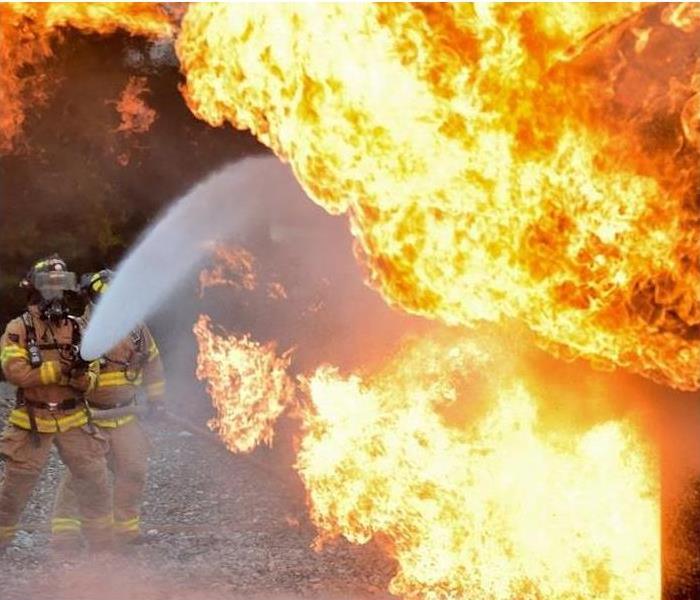 Fire From Space Heater
Fire From Space Heater
When the cold winter weather hits, many people turn on space heaters. Generally speaking, space heaters are safe to use. Fires occur mostly when space heaters are used improperly. According to the National Fire Protection Association, space heaters account for 43% of home heating fires. Here are some tips to ensure you use your space heater properly:
Use an electric space heater. Iowa State University Department of Agricultural and Biosystems Engineering warns that space heaters that use kerosene, propane, and natural gas pose an additional risk of releasing carbon dioxide (CO2), carbon monoxide (CO), and nitrogen dioxide into the air if they aren't properly vented, which can lead to serious health problems and even death. Electric space heaters (when used properly) are always a safer device for indoor heating.
Plug your space heater directly into the wall outlet. Never plug your electric space heater into an extension cord or power strip. Space heaters are often the cause of electrical fires because they overload a circuit.
Move your space heater away from clutter. Always keep your space heater at least 3 feet away from any furniture or combustible items (including bedding and curtains). Remember to instruct children to remain 3 feet away from the heater too.
Turn your space heater off. Whenever you leave the room or go to sleep, it is important to turn your space heater off. Unplug the heater when it’s not in use by pulling the plug straight from the outlet. Check the cord for damage periodically, and don’t use it if it’s frayed or worn.
Space heaters are not dangerous if they are properly used. Keep these safety tips in mind to prevent fire in your property.
The Importance of an Office Fire Escape Plan
1/12/2021 (Permalink)
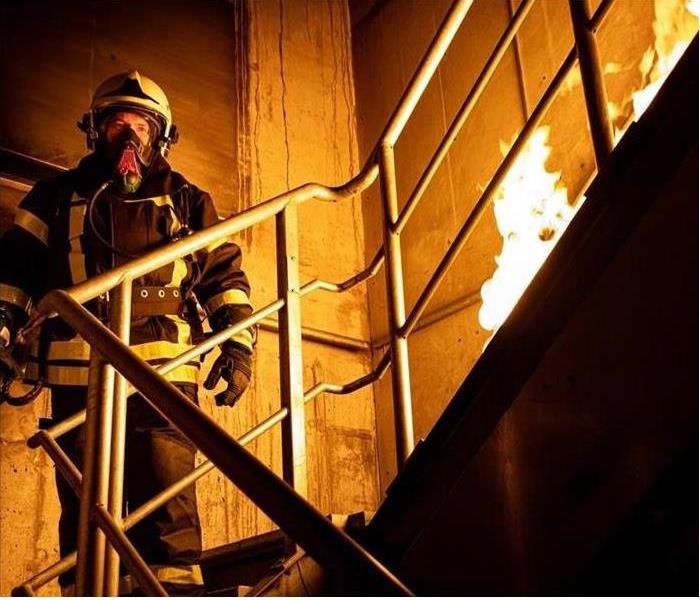 Fire Escape
Fire Escape
Fires can be destructive and deadly. The speed at which a fire spreads through a Pasadena facility varies based on the materials and causes of the blaze. Every emergency and fire restoration service likely understands and encourages every commercial property owner to create a fire escape plan. Unfortunately, too many businesses do not know what that entails. Escape plans need not be complicated and should require at least three of the following components:
Two Exit Minimum
The basic emergency escape plan requires a two exit minimum out of every room in your facility. While plans can have more options, two is the minimum because it improves the odds of survival. If a room only has one exit, then people may become trapped if the fire overtakes that exit. Most offices will have a window and a door, these can stand as your exit points, but make sure that there is a feasible way to get to safety from those points.
Clear Pathways
The key to an effective fire escape plan is clear pathways. Make sure that hallways are free of clutter and that exit points are not blocked by shelving. While warehouses and packaging facilities can become overwhelmed with boxes and random items, it is crucial to have processes in effect to maintain order and cleanliness.
Implementation and Practice
It is not enough to create exit strategies. The only way to test the effectiveness of a plan is to implement it and put it into action. Routine practices should take place throughout the year to ensure that every employee makes it safely outside without incident. These scheduled run-throughs will help you tweak the escape strategy if you find there are hiccups.
A fire escape plan is not necessarily complicated to create, but the practice is vital to avoid complacency. If you need help creating a plan for your building, then contact the fire department or a restoration expert for help.
Choose the Right Fire Extinguisher
12/23/2020 (Permalink)
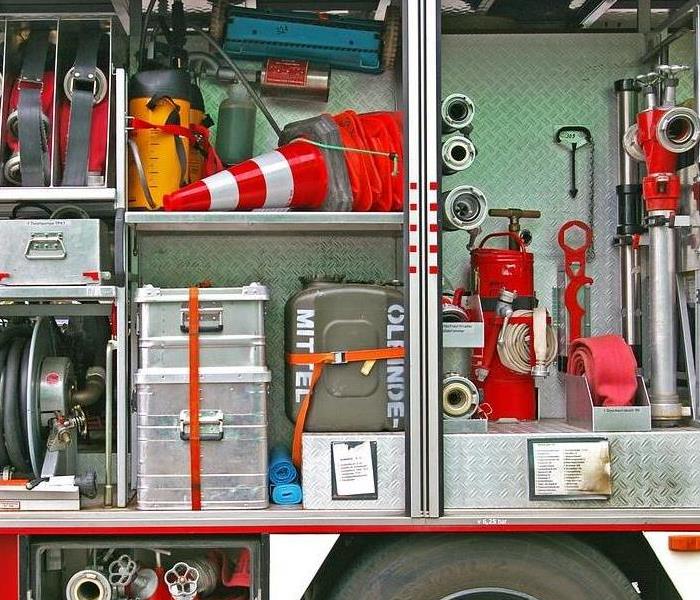 Fire Extinguishers
Fire Extinguishers
SERVPRO of Glen Burnie sees a lot of fires. Many fires start in the kitchen and might be easily extinguished if the property owner had a fire extinguisher. We’ve come up with the following list so you can select the best fire extinguisher for your property:
- Class A: This is the most common extinguisher and can be used to put out fires in ordinary combustibles such as cloth, wood, rubber, paper, and many plastics.
- Class B: Used on fires involving flammable liquids, such as grease, gasoline, and oil.
- Class C: Designed for fires involving appliances, tools, or other equipment electronically energized or plugged in.
- Class D: For use on flammable metals; often specific for the type of metal in question. These are typically found in factories.
- Class K: Intended for use on fires that involve vegetable oils, animal oils, or fats in cooking appliances. Generally found in commercial kitchens.
Did you know cooking equipment is the leading cause of residential fires? As the holiday season begins and you find yourself in the kitchen more often while hosting friends and family, fire precautions should be top of mind. Plan this season to help ensure it is safe and fire-free.
How Does Candle Smoke Cause Damage?
12/23/2020 (Permalink)
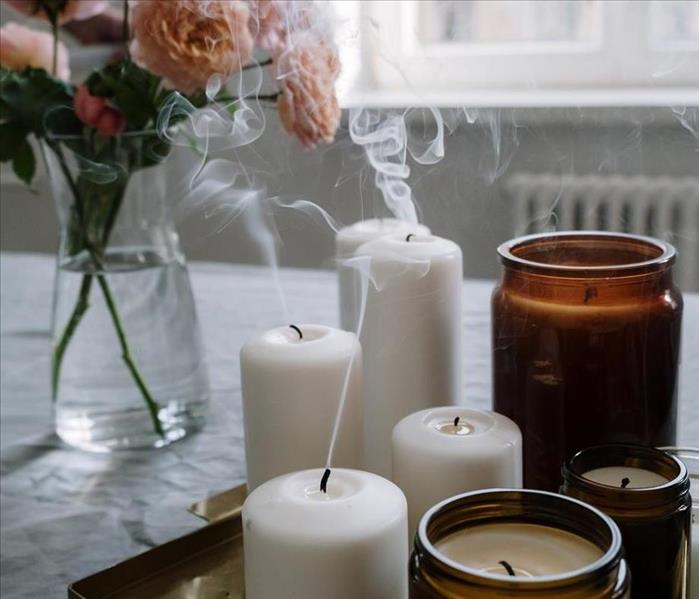 Candle Smoke and Soot
Candle Smoke and Soot
Did you know that smoke from candles is toxic? The cheapest and most widely used candle is made of paraffin—which is derived from petroleum. When burned, it releases a toxin called toluene, which has been found to cause DNA strand breakdown, affecting the nervous system.
Smoke from candles is actually soot. Smoke is just soot and other particulates carried on the hot air rising off the flame. When you put the top on a jarred candle and trap the smoke, it cools. And, the particulates in the candle settle onto the candle and the inside walls of the jar.
Fireplaces, cigarettes and the burning of candles can all result in soot stains on walls. Though soot collects on other surfaces in the home, soot stains are easy to spot on light-colored walls. Aside from being unattractive, soot can create a health hazard.
In general, candles won’t set off your smoke alarm. However, they can cause a fire. SERVPRO of Glen Burniehas provided fire damage remediation and reconstruction to several properties where candles were the cause of the fires.
Choose the Right Fire Extinguisher
12/3/2020 (Permalink)
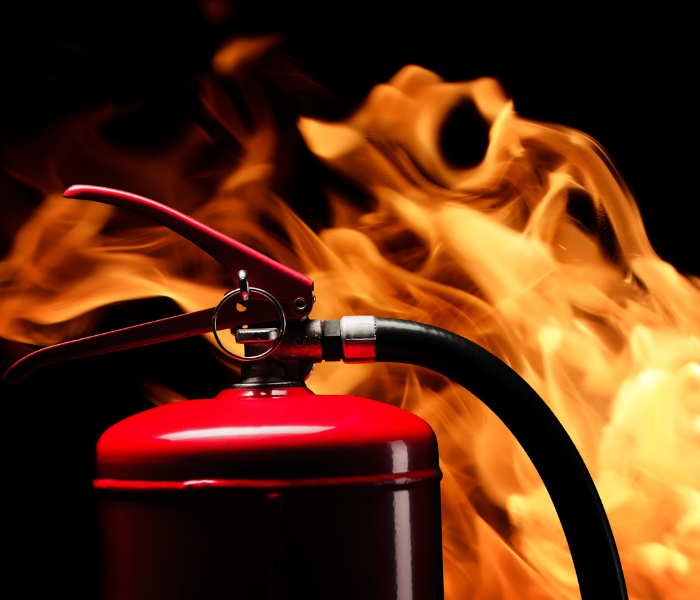 Fire Extinguisher
Fire Extinguisher
SERVPRO of Glen Burnie sees a lot of fires. Many fires start in the kitchen and might be easily extinguished if the property owner had a fire extinguisher. We’ve come up with the following list so you can select the best fire extinguisher for your property:
- Class A: This is the most common extinguisher and can be used to put out fires in ordinary combustibles such as cloth, wood, rubber, paper, and many plastics.
- Class B: Used on fires involving flammable liquids, such as grease, gasoline, and oil.
- Class C: Designed for fires involving appliances, tools, or other equipment electronically energized or plugged in.
- Class D: For use on flammable metals; often specific for the type of metal in question. These are typically found in factories.
- Class K: Intended for use on fires that involve vegetable oils, animal oils, or fats in cooking appliances. Generally found in commercial kitchens.
Did you know cooking equipment is the leading cause of residential fires? As the holiday season begins and you find yourself in the kitchen more often while hosting friends and family, fire precautions should be top of mind. Plan this season to help ensure it is safe and fire-free.
Attic Fire
11/3/2020 (Permalink)
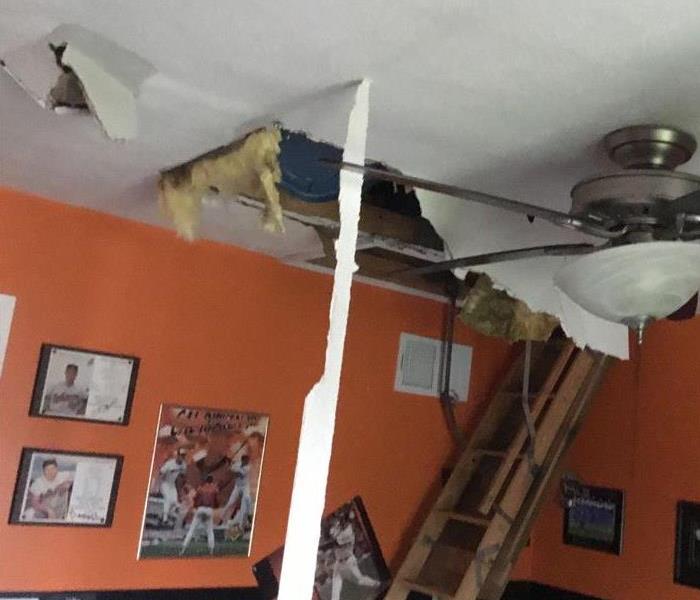 Fire Damage
Fire Damage
Recently, SERVPRO of Glen Burnie worked with a homeowner whose property suffered an attic fire. What surprised the homeowner was the water damage that came with extinguishing the fire. For homeowners, putting out a fire can be worse than the fire itself.
The National Fire Protection Association (NFPA) offers the following eye-opening statistics on structure fires: more than one-quarter (27%) of reported fires occurred in homes within the last year. Even worse, 79% of fire-related deaths were caused by home fires.
After any fire, limit movement in the home to prevent soot particles from spreading and additional damage from occurring. If you can, place clean towels or old linens on rugs and high traffic areas and upholstery.
With this particular fire, our IICRC certified fire restoration team was at the property two hours after the fire occurred. As a trusted leader in the fire restoration industry, our Crew Chief went to work on assessing the fire, soot, smoke, and water damage.
When fire and water damage strikes, a fast response is critical. SERVPRO OF Glen Burnie is dedicated to responding immediately, day or night, to your home or business. A faster response helps to prevent secondary damage and to reduce cost.
Are you Prepared for a Fire?
10/13/2020 (Permalink)
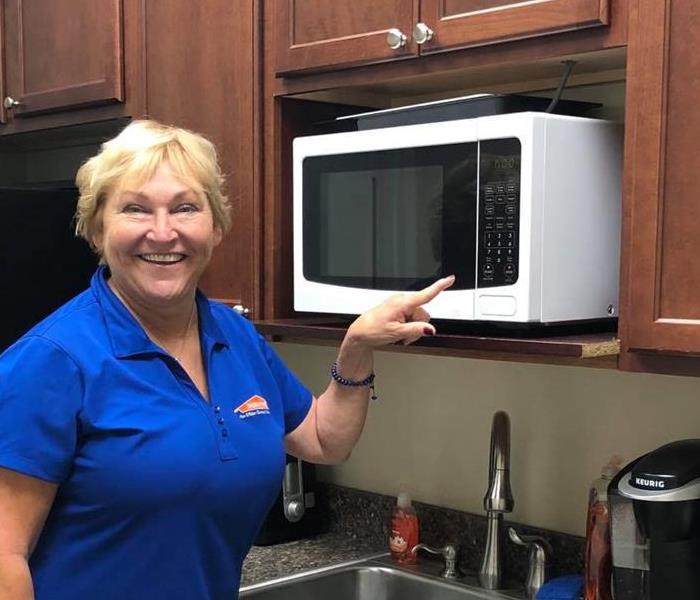 Kitchen Safety
Kitchen Safety
This year the National Fire Protection Association (NFPA) set aside October 4-10, 2020 as fire prevention week. The 2020 theme was, “Serve Up Fire Safety in the Kitchen!” This topic works to educate everyone about the simple but important actions they can take to keep themselves, and those around them, safe in the kitchen. Does your family have a fire evacuation plan?
To ensure the fastest emergency evacuation plan, consider the following:
- Start your fire evacuation plan with a map. This map should include locations of exits, assembly points, and equipment (such as fire extinguishers) that may be needed in an emergency. Households with children should consider drawing a floor plan of your home, marking two ways out of each room, including windows and doors. Also, mark the location of each smoke alarm.
- A closed door may slow the spread of smoke, heat and fire. Install smoke alarms in every sleeping room, outside each sleeping area and on every level of the home.
- When you walk through your plan, check to make sure the escape routes are clear and doors and windows can be opened easily.
- Choose an outside meeting place (i.e. neighbor's house, a light post, mailbox, or stop sign) a safe distance in front of your home where everyone can meet after they've escaped. Make sure to mark the location of the meeting place on your escape plan.
- Go outside to see if your street number is clearly visible from the road. If not, paint it on the curb or install house numbers to ensure that responding emergency personnel can find your home.
- Have everyone memorize the emergency phone number of the fire department. That way any member of the household can call from a neighbor's home or a cellular phone once safely outside.
Now that you have your plan in place, make sure you practice it every year.





 24/7 Emergency Service
24/7 Emergency Service







